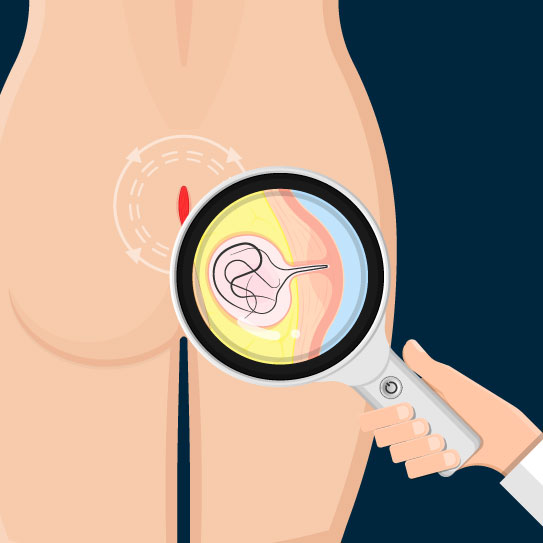Pilonidal disease, commonly known as pilonidal cyst or pilonidal sinus, is a condition that involves the formation of a cyst or abscess near the tailbone (coccyx) at the top of the buttocks. The word "pilonidal" means "nest of hair," which is indicative of one of the possible causes of this condition.

Here are some key points about pilonidal disease:
1.Causes: Pilonidal cysts are often caused by hair follicles becoming embedded in the skin. Friction and pressure in the affected area, such as prolonged sitting, excessive sweating, or tight clothing, may contribute to the development of the condition.
2. Symptoms: Common symptoms include pain, redness, and swelling at the base of the spine, just above the cleft of the buttocks. Pus or blood-filled cysts may also develop. In severe cases, the cyst can become infected, leading to the formation of an abscess.
3. Diagnosis: Diagnosis is usually based on clinical examination and medical history. Imaging studies such as ultrasound or MRI may be used to assess the extent of the cyst or abscess.
4. Treatment: Treatment options vary depending on the severity of the condition. Mild cases may be managed with home care, such as keeping the area clean and using warm compresses. In more severe cases or those with recurrent infections, medical intervention may be necessary. This can include draining the cyst or abscess, and in some cases, surgical removal of the cyst or sinus tracts.
5. Surgery: Surgical options include incision and drainage, excision of the cyst, and more advanced procedures like flap closure or cleft lift surgery. The choice of surgery depends on the specific characteristics of the cyst and the patient's overall health.
6. Recovery: Recovery time depends on the chosen treatment. After surgery, patients are typically advised to keep the wound clean and avoid activities that could put strain on the healing area. Full recovery can take several weeks.
7. Prevention: While there's no foolproof way to prevent pilonidal disease, maintaining good personal hygiene, avoiding prolonged sitting, and keeping the area dry can reduce the risk. Some people may be more predisposed to developing pilonidal cysts due to genetic factors.
It's important to note that if you suspect you have a pilonidal cyst or are experiencing symptoms, it is advisable to consult with a healthcare professional for proper diagnosis and guidance on appropriate treatment options.
